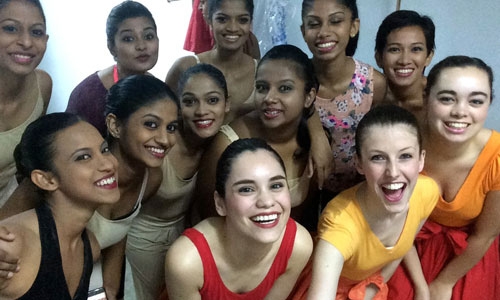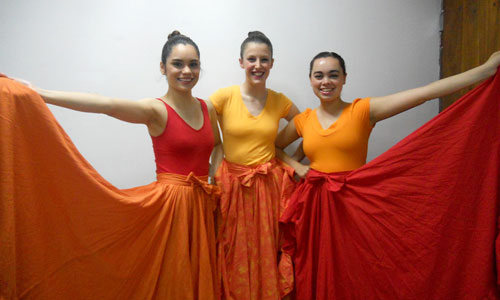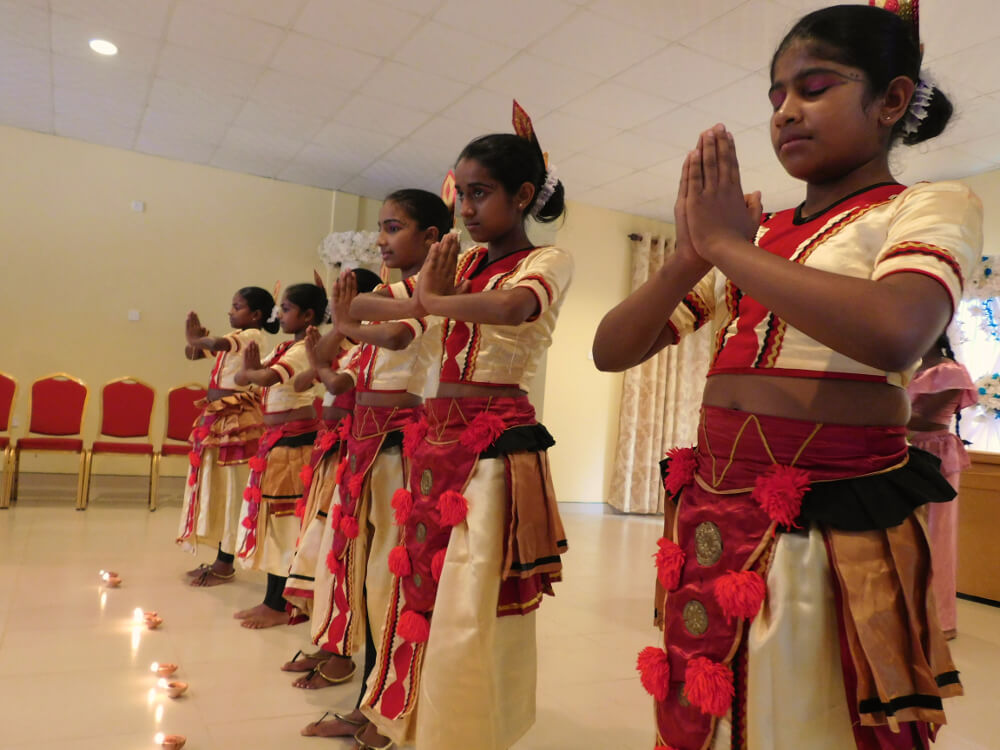Three dance students, a dance professor, and a recent alumna transcended cultural and language barriers as they worked to create a successful performance piece at a Sri Lankan dance studio.
In the summer of 2015, Umeshi Rajeendra ’13, invited Professor Sandra Mathern-Smith, dance majors Callie Towles ’16 and Martha Gutierrez ’16, and dance minor Emily Farrow ’18, to perform and teach, in celebration of the opening of her modern dance studio, the Mesh Academy of Dance, in Colombo, Sri Lanka. Their performance to sold-out houses was part of a concert titled “Genesis – The Awakening,” with choreography by Rajeendra and contributions by Mathern-Smith and Gutierrez.
Before heading to the island nation, the students studied its culture, created choreography, developed pedagogy, and constructed research questions. Cultural differences would affect their ability to teach dance, so they looked for ways both to span their differences and to learn from another culture.
When they began working with their Sri Lankan students, the trio quickly realized how much further they had to go. Although some degree of difference was anticipated, it went far deeper than originally thought. They became aware of how the actual perception of movement differed between cultures.
One surprising block to progress was the use of mirrors. “When our students could see themselves in those mirrors, it changed their movement. They have been taught to critique their movement,” Towles said. Covering the mirrors allowed the students to rely on their physical sensations rather than their outside appearance. But there were more challenges to overcome.
“The dancers in Sri Lanka didn’t have access to the vocabulary we use to describe what they were seeing,” she said. “This is when we realized the stark difference between cultures. We had to change the way we taught our classes to address the needs of these dancers.”
“I had to ask myself how I specifically constructed each movement in my own body to explain these foreign movements to the dancers,” she added. “Once we found the right word to describe it, the movement clicked for them.”
“This dance exchange caused my students to question their own ideas about identity and aesthetics,” said Mathern-Smith. “They were forced to think about their bodies in a different way than they ever have before.”













